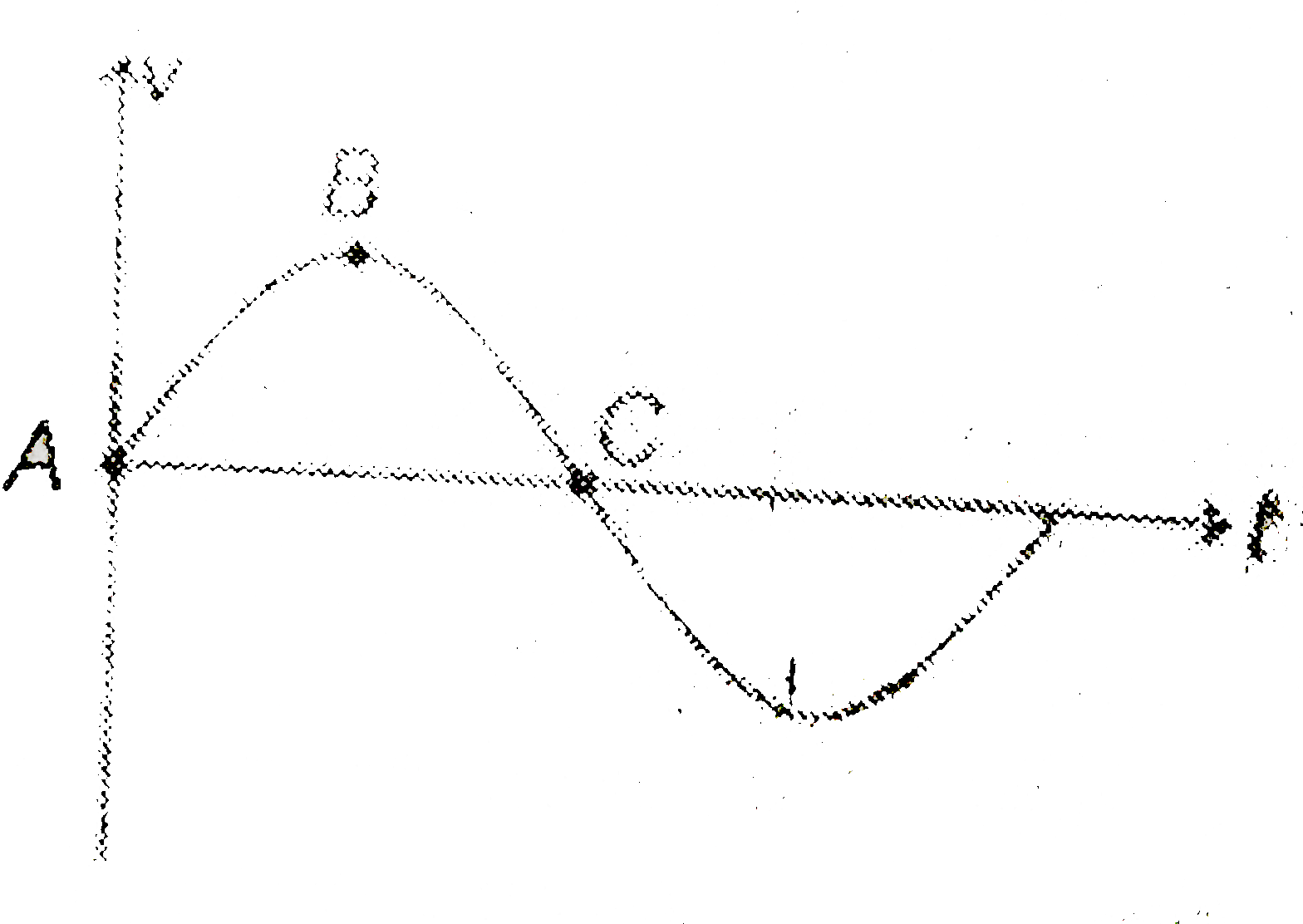In SHM, displacement, velocity and acceleration all oscillate simple harmonically with same angular frequency ω. Phase difference between any two is π2 except that between displacement and acceleration which is π
Displacement time equation of a particle is given as, x=Asin(ωt+π6)−Acos(ωt+π2)
The motion of the particle is not simple harmonic
at t=0, acceleration of particle is positive
at t=0, velocity is negative
none of above
The correct Answer is:D
Similar Questions
Passage V) In SHM displacement, velocity and acceleration all oscillate simple harmonically with same angular frequency ω. Phase difference between any two is π2 except that between displacement and acceleration which is π.
v-t graph of a particle is SHM is as shown in figure Choose the wrong option.

View SolutionShow that S.H.M the phase difference between displacement and velocity isπ2, and between displacement and acceleration isπ.
View Solution
Knowledge Check
Passage V) In SHM displacement, velocity and acceleration all oscillate simple harmonically with same angular frequency ω. Phase difference between any two is π2 except that between displacement and acceleration which is π.
Displacement -time equation of a particle is given as x=Asin(ωt+π6)−Acos(ω+π6), then:Athe motion of the particle is not simple harmonicBat t=0, acceleration of particles is negativeCat t-0, velocity of particle is negativeDNone of the above.Passage V) In SHM displacement, velocity and acceleration all oscillate simple harmonically with same angular frequency ω. Phase difference between any two is π2 except that between displacement and acceleration which is π.
v-t graph of a particle is SHM is as shown in figure Choose the wrong option.
 AAt A particle is at extreme positionBAt B acceleration of particle is zeroCAt C acceleration of particle is maximum and in negative direction.DNone of the above.
AAt A particle is at extreme positionBAt B acceleration of particle is zeroCAt C acceleration of particle is maximum and in negative direction.DNone of the above.The phase difference between displacement and acceleration of a particle in a simple harmonic motion is:
A3π2 radBπ2 radCZeroDπ rad
The phase difference between displacement and acceleration of particle in a simple harmonic motion is
View SolutionThe phase difference between displacement and acceleration of particle in a simple harmonic motion is
View SolutionThe phase difference between the displacement and acceleration of a particle executing simple harmonic motion is
View SolutionThe phase difference between displacement and acceleration of a particle performing S.H.M. is
View SolutionThe phase difference between displacement and acceleration of a particle performing S.H.M. is
View Solution
